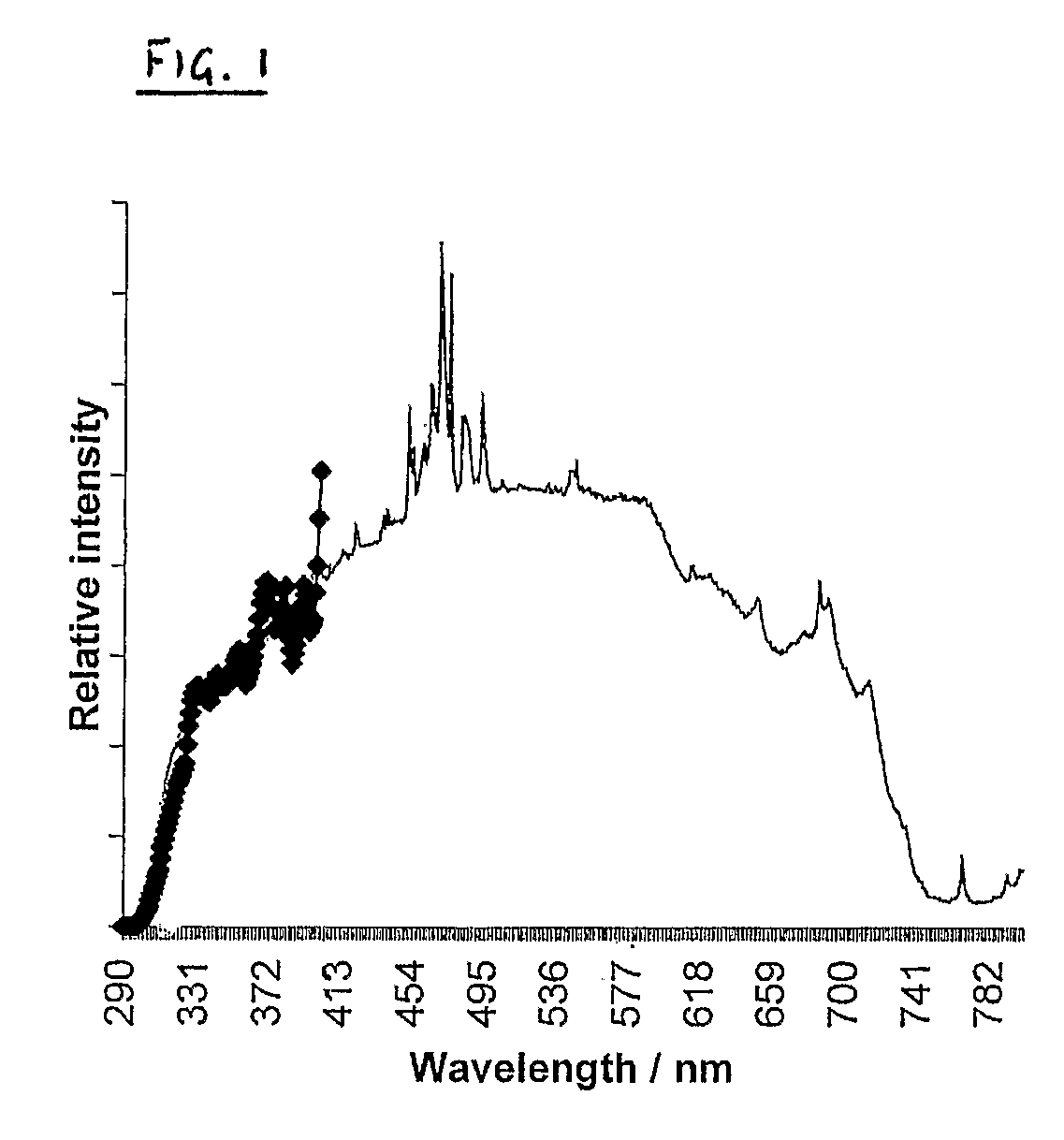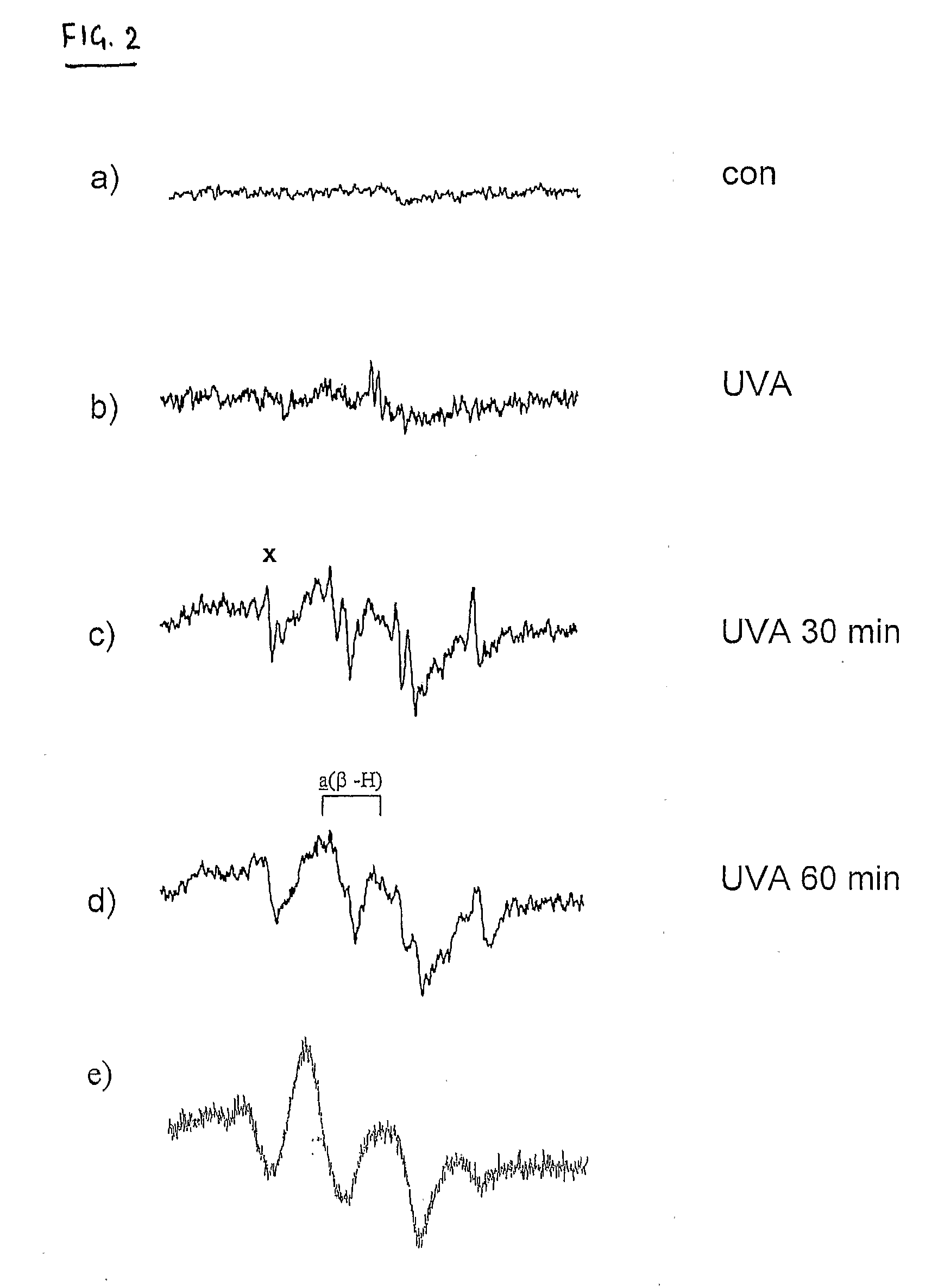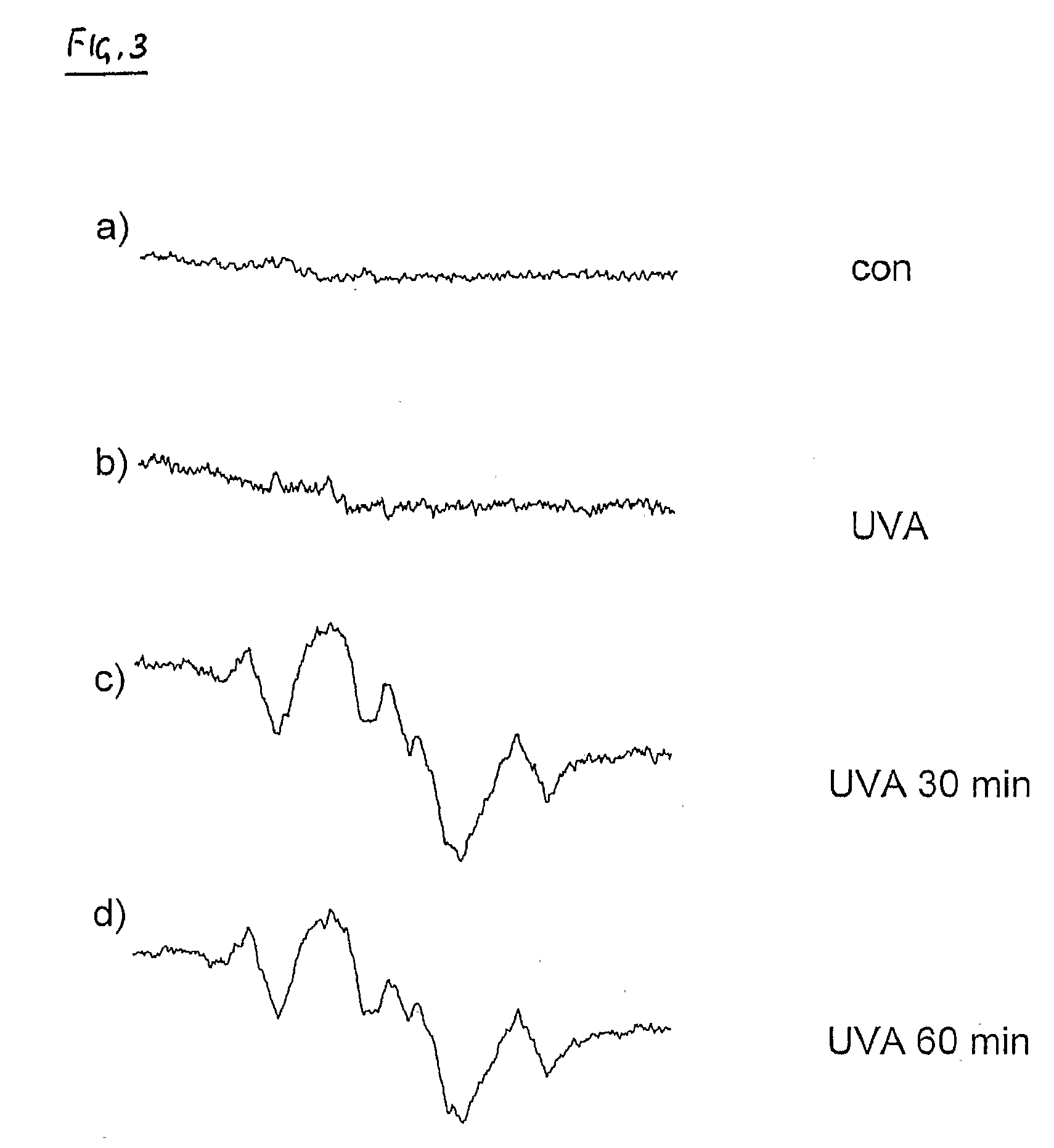Method of determining damage to skin
a skin damage and skin technology, applied in the field of skin damage determination, can solve the problems of skin ageing and deterioration, degradation and/or loss of proteins, aggregation and/or modification, cosmetically unwelcome symptoms such as wrinkles, sagging (loss of elasticity) and lines
- Summary
- Abstract
- Description
- Claims
- Application Information
AI Technical Summary
Benefits of technology
Problems solved by technology
Method used
Image
Examples
Embodiment Construction
[0035]The expression “human skin or an effective substitute therefor” used herein refers to human skin tissue or discrete human skin cells, and the tissue or discrete cells of any animal skin or other biological material (e.g. structural protein components of skin such as collagen, elastin and keratin) which provides a quantitative measurable radical response under solar radiation and is therefore equivalent to human skin for the purposes of this invention. Suitable animal skin may, for example, include natural animal skin and animal skin comprising genetically modified (e.g. humanized) cells. The skin may, for example, comprise chemically modified or cultured skin cells.
[0036]The expression “sunscreen composition or anti-ageing or other skin preparation” used herein includes any composition adapted or intended to have an effect of reducing the intensity of solar or artificial radiation incident on human skin when applied, usually directly, to that skin. Such compositions may includ...
PUM
 Login to View More
Login to View More Abstract
Description
Claims
Application Information
 Login to View More
Login to View More - R&D
- Intellectual Property
- Life Sciences
- Materials
- Tech Scout
- Unparalleled Data Quality
- Higher Quality Content
- 60% Fewer Hallucinations
Browse by: Latest US Patents, China's latest patents, Technical Efficacy Thesaurus, Application Domain, Technology Topic, Popular Technical Reports.
© 2025 PatSnap. All rights reserved.Legal|Privacy policy|Modern Slavery Act Transparency Statement|Sitemap|About US| Contact US: help@patsnap.com



